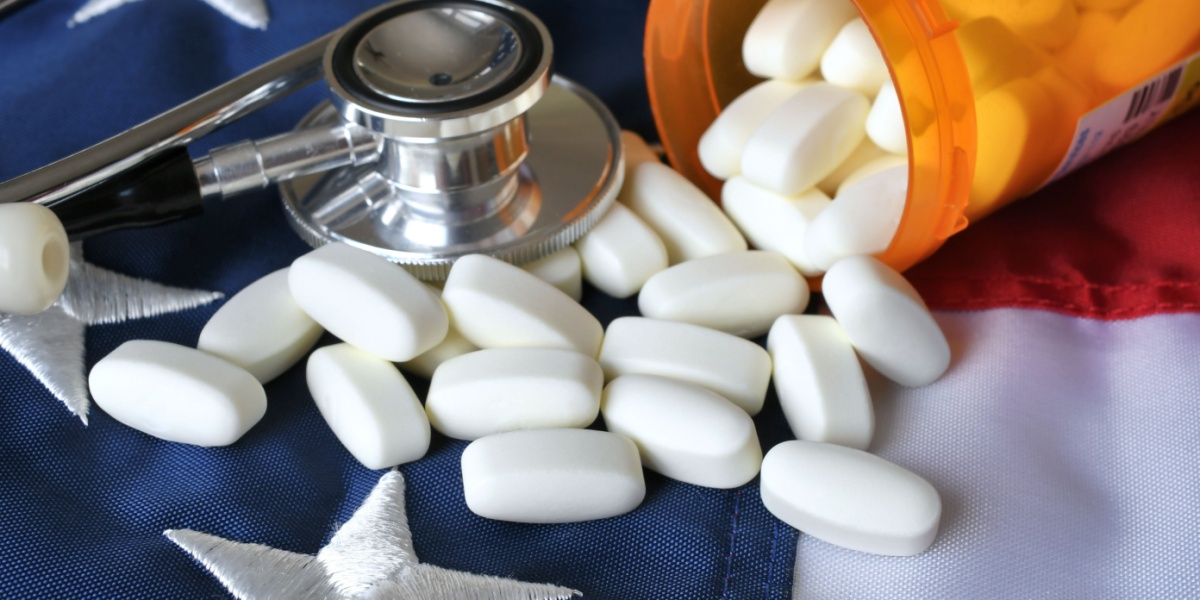There were over 80,000 deaths in the U.S. relating to drug overdose in 2024, close to double the number of U.S. servicemen killed in the Vietnam War. [1][2] Whilst this number has decreased in recent years, the drug epidemic is still ongoing. But which states are most affected?
Recent analysis by WalletHub has revealed that New Mexico is struggling the most with drug use and overdose cases, with West Virginia and Nevada following close behind. [3] Hawaii, Utah, and Nebraska are the three states with the lowest amount of drug use. [3]

How states were ranked: Metrics used by the WalletHub report
The metrics used in this report are comprehensive, enabling an accurate representation of each state’s drug use. There were three main categories: Drug Use & Addiction, Law Enforcement, and Drug Health Issues & Rehab. [3] Within these categories, several areas were analysed, with some examples listed below: [3]
Drug Use & Addiction
- Share of adults who used illicit drugs in the past month
- Share of teenagers who were offered, sold, or given illicit drugs at school in the past month
- Overdose deaths per capita
Law Enforcement
- Drug arrests per capita
- Drug arrests on college campuses per 1000 students
- States with employee drug testing laws
Drug Health Issues & Rehab
- Substance abuse treatment facilities per 100,000 people using illicit drugs
- Drug treatment program availability for pregnant women
- Narcotics Anonymous and Alcoholics Anonymous meeting accessibility
Scoring system
A point system was used, with each metric graded on a 100-point scale, where a score of 100 indicated the most severe drug problem. [3] Each state was assigned an overall numerical score based on a weighted average across all metrics, and this score was used to rank the states. [3] Some metrics, for example, overdose deaths per capita, were given a higher weighting compared to other metrics, based on their severity concerning drug use. [3]
The top states with the highest drug use
Below are profiles relating to each of the top states regarding their drug use.
1. New Mexico
New Mexico is struggling the most with drug use, most notably with young people. [3] They are the state with the highest number of teens using illicit drugs, and teens who have tried marijuana before the age of 13. [3] However, adults in New Mexico are also being affected, with the state having the third highest amount of illicit drug use in adults, and the second highest percentage of drug-using adults who have not received treatment. [3]
The analysis demonstrated a large number of adults with unmet drug-treatment needs, something that needs to be addressed to help reduce the burden of drug use in the state. [3]
2. West Virginia
West Virginia has the second-largest drug problem; however, most strikingly, they have the largest number of drug overdose deaths per capita, highlighting the significance of the drug crisis in the state. [3] The Mountain State also has a high number of drug-related college campus arrests per capita. [3] Worryingly, a high percentage of children are being exposed to drug use by a family member, which can go on to increase the risk of substance use in the child as they grow older. [3][4]
3. Nevada
Nevada has the third-largest drug problem, and, as with New Mexico, it has a significant problem with drug use in children. [3] They have the second-highest percentage of children who were offered or sold illicit drugs on school property, and also have the third-highest rate of teens who have tried marijuana before the age of 13. [3] In addition, Nevada has the fewest substance-use treatment facilities per 100,000 drug users, which has led to the highest percentage of adults with unmet drug-treatment needs, demonstrating the scope of the drug problem in the state. [3]
While these three states were highlighted as struggling most with drug use, several other states also scored poorly. These include Alaska, the District of Columbia, and Oklahoma. The full list of states can be seen here. [3]
Factors driving high use
Many factors contribute to increased drug use, both on an individual level and on a wider scale. Individuals struggling with mental health conditions or who have experienced a past traumatic event are more likely to use drugs, often to mask their emotions. [5] Socioeconomic factors, like lower income and unemployment, also increase the risk of substance use.
The WalletHub report looked into children exposed to drug use by a family member, as this is also linked to increased risk of substance use as a child gets older, and a cycle can be formed if they use drugs around their children. [4] In many communities, substance use is normalised and drugs are easily accessible, which further drives use. Inadequate or insufficient drug-use treatment centres locally can then further exacerbate the problem.
Looking specifically at the most affected states, New Mexico lacks policies to discourage drug use, such as employee drug testing laws. [3] West Virginia has a relatively low number of substance abuse and mental health social workers per capita, forming a barrier for individuals to get help for their drug use. [3] Similarly, the low number of substance abuse treatment facilities in Nevada means there is a high percentage of adults in the state who are unable to receive the treatment they need. [3]
The human impact: Addiction, overdose, and recovery
Addiction can have a huge impact, creating a ripple effect that extends beyond the individual, affecting relationships, employment, and entire communities. Relationships with friends and family suffer as the trust erodes, and individuals might lie about their drug use, steal from family members, or become emotionally unavailable. This social isolation often becomes a vicious cycle, driving further drug use.
Additionally, physical and mental health often deteriorate, with chronic use leading to medical complications and persistent mental health issues. Many users lose their jobs due to decreased productivity or poor time-keeping, while the escalating costs of obtaining drugs can exacerbate financial trouble.
In the local community, substance use can lead to increased crime and antisocial behavior, straining emergency services and making residents feel unsafe in their neighbourhood. This can lead to declining property values and local businesses struggling with theft and reduced foot traffic. Schools might require additional counselling services for students experiencing drug use at home.
Addiction treatment is vital to help those suffering from substance use, but as seen above, some states have insufficient treatment centres to meet demand, which is an area that must be addressed. Having enough support for addiction recovery will mean less risk of relapse and overall better outcomes.
What can be done: Resources and solutions
Despite this, there are lots of initiatives and available resources for those suffering from addiction. The Substance Abuse and Mental Health Services Administration (SAMHSA) funds many community treatment centers and recovery support services. Many states have expanded their medication-assisted treatment services and have created more harm reduction programs, such as needle exchanges.
Nebraska, which has the fewest overdose deaths per capita, funds several initiatives to reduce opioid abuse, including naloxone distribution and a prescription drug take-back program. [6] Policymakers must continue to fund these initiatives, both at the state and national levels, to help continue the progress made on the drug epidemic in the U.S.




